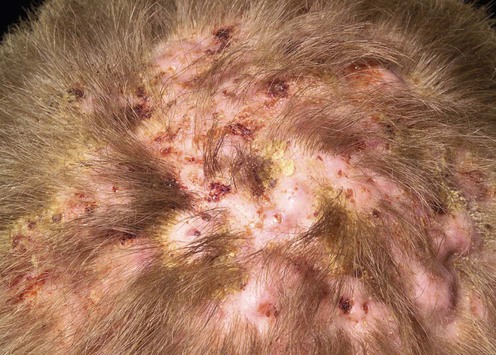Curry SS, Gaither DH, King LE. J Am Acad Dermatol 1981; 4: 673–8.
Dissecting cellulitis of the scalp

Specific investigations
Squamous cell carcinoma arising in dissecting perifolliculitis of the scalp.
![]()
Stay updated, free articles. Join our Telegram channel

Full access? Get Clinical Tree





